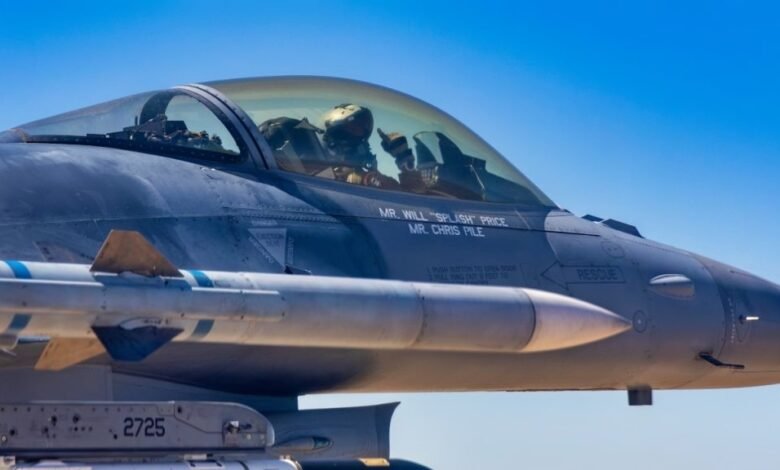How F-35 Tech Turned The ‘Old’ F-16 Into A New Killer Jet

Key Points and Summary – Born in the 1970s, the F-16 should be aging out. Instead, a sweeping Service Life Extension Program and F-35–grade tech have effectively rebuilt the jet for modern war.
-Structural upgrades and new systems push service life toward 12,000 hours, while an AESA radar lets pilots track dozens of targets at far greater ranges.
-A revamped cockpit, added automation, and the F-16V’s high-def displays, new data bus, EW suite, and helmet cueing all sharpen lethality.
-With passive IRST sensors giving it another way to hunt in a jammed environment, today’s F-16 is a legacy airframe with a very non-legacy bite.
BONUS – We have included a few photos from our recent visit to an F-16 on display onboard the USS Intrepid in New York City.
From 1970s Relic to Digital Fighter: The F-16’s F-35 Makeover
The Air Force’s 1970s-era F-16 fighter received F-35 technology as part of a massive fleet-wide overhaul intended to improve targeting, attack precision, and computer systems enhancements—to extend the fighter’s combat life all the way into the 2040s.
It may be challenging to imagine that today’s Air Force F-16 dates back to the 1970s, a circumstance that might lead some to wonder how the combat aircraft has maintained its combat relevance and performance capacity in the dynamic threat environment of the 2020s.
The answer is actually quite extensive and dates back many years to the inception and preservation of an F-16 Service Life Extension Program, which upgraded the upper wing skin and fittings, adjusted the bulkhead and canopy, and equipped the aircraft with an F-35 Active Electronically Scanned Array (AESA).
AESA RADAR
With AESA, the F-16 incorporated an entirely new ability to find, detect, and track enemy threats at much greater ranges.
The aim of the Service Life Extension Program (SLEP) was to extend the flight time of F-16s from roughly six to seven thousand flight hours to 8,000 or more flight hours.
On top of that, the service’s confidence in the upgrades has led to a plan to have the F-16 fly all the way out to 12,000 hours.
The AESA radar, which Lockheed developers say can track up to 20 targets at once, is a massive upgrade over the F-16’s previous mechanically scanned radar.
By virtue of its ability to track multiple targets, the AESA radar can scan a 360-degree sphere, including horizontal, vertical, and diagonal vectors.



